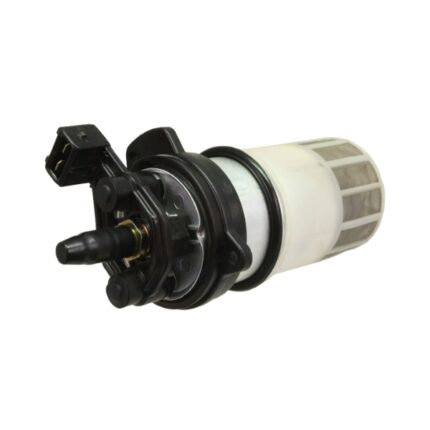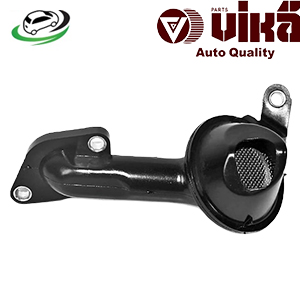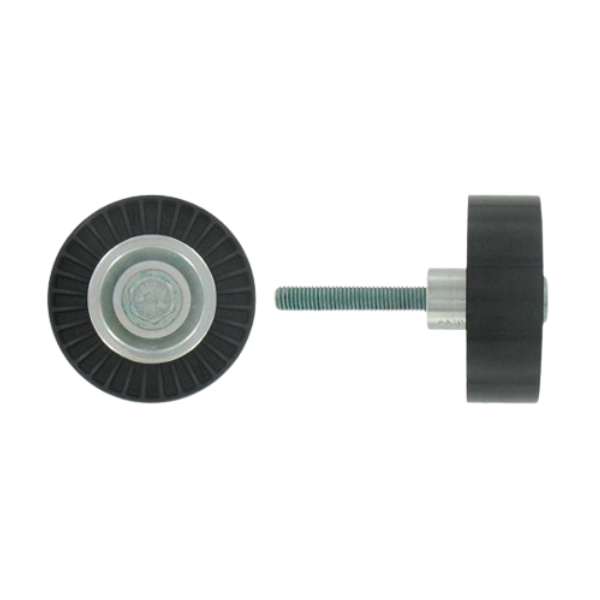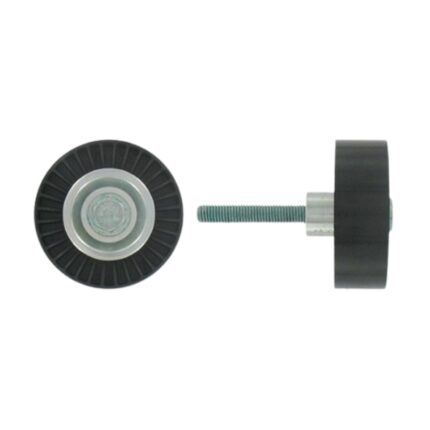Get AUDI A1 (8X1 8XK) Alternator belt roller 1J0145276 in Kenya
The alternator belt roller, commonly referred to as an idler pulley or tensioner pulley, plays a critical role in the operation of the vehicle’s alternator and serpentine belt system. This guide delves into the function of the alternator belt roller, its types, benefits, common issues, and maintenance tips to ensure optimal performance and longevity.
What is an Alternator Belt Roller?
An alternator belt roller is a pulley that is part of the belt system in an automobile. It is usually designed to provide tension to the serpentine belt that drives the alternator and other engine accessories. By keeping the belt tight, the roller ensures that the alternator can effectively generate electricity to recharge the vehicle’s battery and power electrical components.
There are generally two types of pulleys associated with the alternator belt system: idler pulleys and tensioner pulleys. While both serve the purpose of maintaining proper tension and routing for the belt, their designs and mechanisms may differ.
Function of the Alternator Belt Roller
The primary functions of the alternator belt roller include:
- Tension Maintenance:
The roller maintains the proper tension on the alternator belt. Adequate tension is crucial for the efficient operation of the alternator, as it ensures a solid connection for power generation. - Belt Routing:
The belt roller helps route the serpentine belt around various engine components, including the alternator, power steering pump, and air conditioning compressor. Proper routing is essential for the smooth operation of these systems. - Noise Reduction:
A well-functioning alternator belt roller helps reduce noise produced by the belt system. Worn or damaged rollers can lead to squeaking or rattling sounds, which can be both annoying and indicative of underlying issues. - Vibration Absorption:
The roller also plays a role in absorbing vibrations from the engine. This absorption helps to prolong the life of the belt and associated components by reducing wear and tear.
Types of Alternator Belt Rollers
- Idler Pulleys:
Idler pulleys are non-tensioning pulleys that are used to guide the serpentine belt and maintain proper routing. They do not apply tension to the belt but provide a surface for the belt to run against. - Tensioner Pulleys:
Tensioner pulleys are adjustable and are designed to maintain the proper tension on the serpentine belt. They usually have a spring-loaded mechanism that allows them to adjust the tension automatically as the belt wears or stretches over time. This feature helps to ensure optimal performance and efficiency. - Fixed Pulleys:
Some alternator belt systems may use fixed pulleys that do not have any tensioning capability. In these systems, the belt tension is maintained through other means, such as manual adjustments.
Benefits of a Well-Functioning Alternator Belt Roller
- Consistent Power Generation:
A properly functioning alternator belt roller ensures that the belt maintains the correct tension, which is crucial for consistent power generation by the alternator. This reliability is essential for the electrical systems in the vehicle to function properly. - Reduced Wear on Components:
By maintaining proper tension and alignment, the alternator belt roller helps to reduce wear on both the belt and the alternator. This can lead to longer lifespans for these components, saving on replacement costs. - Noise Reduction:
A healthy alternator belt roller contributes to a quieter engine operation. By minimizing belt slippage and vibration, it reduces unwanted noise, enhancing the overall driving experience. - Improved Fuel Efficiency:
A properly tensioned serpentine belt reduces engine drag, which can improve fuel efficiency. When the alternator operates effectively, it consumes less power from the engine, contributing to better fuel economy. - Enhanced Reliability:
By ensuring that the belt system operates smoothly, a well-maintained alternator belt roller enhances the reliability of the entire engine system. This reliability reduces the risk of breakdowns and costly repairs.
Common Symptoms of a Failing Alternator Belt Roller
- Squeaking or Squealing Noises:
One of the most common signs of a failing alternator belt roller is the presence of squeaking or squealing noises. These sounds may indicate that the belt is slipping due to insufficient tension or misalignment. - Engine Performance Issues:
If the alternator is not generating enough power due to a faulty belt roller, it can lead to electrical issues, such as dimming headlights, warning lights on the dashboard, or a dead battery. - Visible Wear and Tear:
Physical inspection may reveal cracks, fraying, or glazing on the serpentine belt, which can be a sign of a worn alternator belt roller. If the roller is visibly damaged or corroded, it may need replacement. - Increased Vibration:
If the alternator belt roller is failing, it may cause increased vibration within the engine bay. Excessive vibration can lead to wear on other components, causing further issues. - Belt Misalignment:
A failing roller may result in belt misalignment, leading to premature wear or damage to the belt and other associated components.
Maintenance Tips for Alternator Belt Rollers
- Regular Inspections:
Regularly inspect the alternator belt roller for signs of wear or damage. Look for cracks, fraying, or corrosion on the roller and surrounding components. Catching problems early can prevent more extensive damage. - Belt Replacement:
Change the serpentine belt according to the manufacturer’s recommendations. A worn belt can put additional strain on the alternator belt roller, leading to premature failure. - Tension Checks:
If you have a manual tensioner, check the tension regularly and adjust as needed. A belt that is too loose or too tight can lead to issues with the roller. - Use Quality Parts:
When replacing the alternator belt roller or the serpentine belt, choose high-quality OEM or aftermarket parts. Quality components are more reliable and will last longer. - Monitor for Warning Signs:
Pay attention to any unusual noises, vibrations, or performance issues. Addressing these symptoms promptly can help avoid more significant problems. - Professional Servicing:
If you’re not comfortable inspecting or replacing the alternator belt roller, seek professional help. Mechanics have the tools and expertise to diagnose and resolve issues effectively.
Conclusion
The alternator belt roller is an essential component of the vehicle’s belt system, playing a critical role in maintaining proper tension and routing for the alternator and other engine accessories. Understanding its function, types, benefits, and maintenance requirements can help vehicle owners ensure the longevity and reliability of their engines. Regular inspections, timely replacements, and prompt attention to warning signs can help prevent costly repairs and keep the vehicle running smoothly for years to come.
Follow us on Facebook for more parts.





Reviews
Clear filtersThere are no reviews yet.